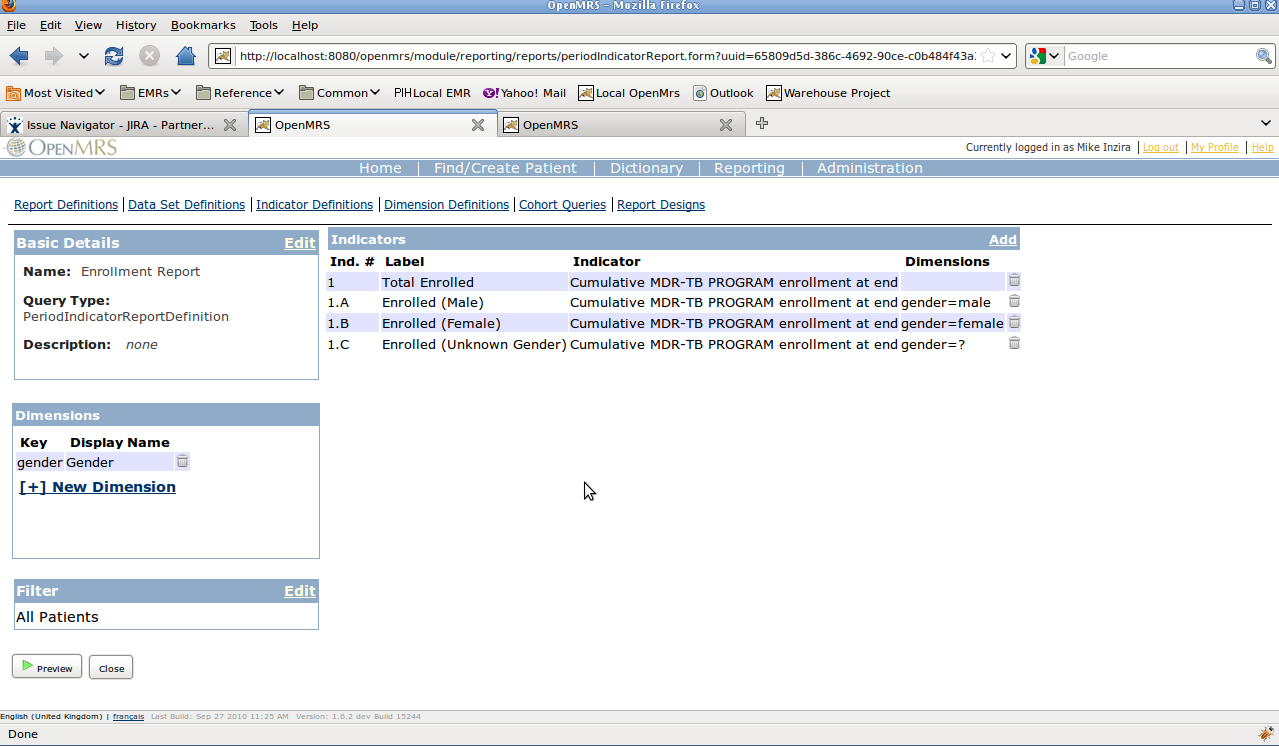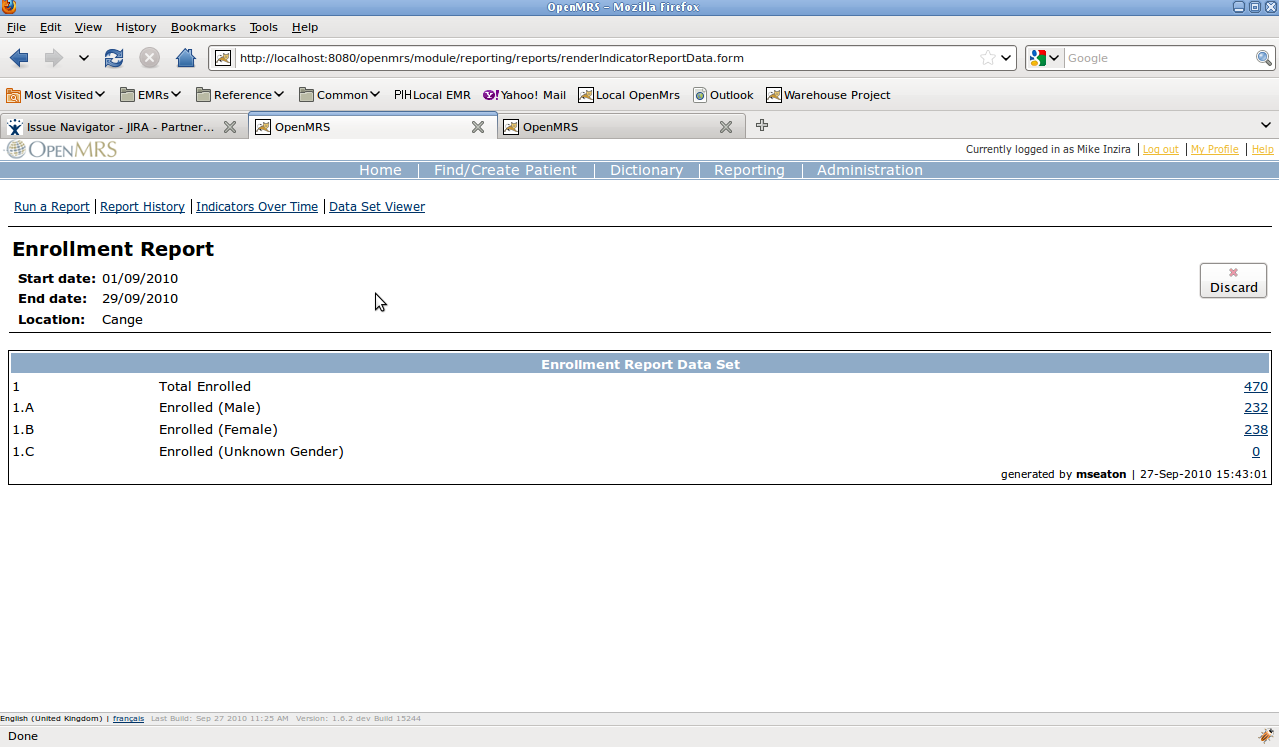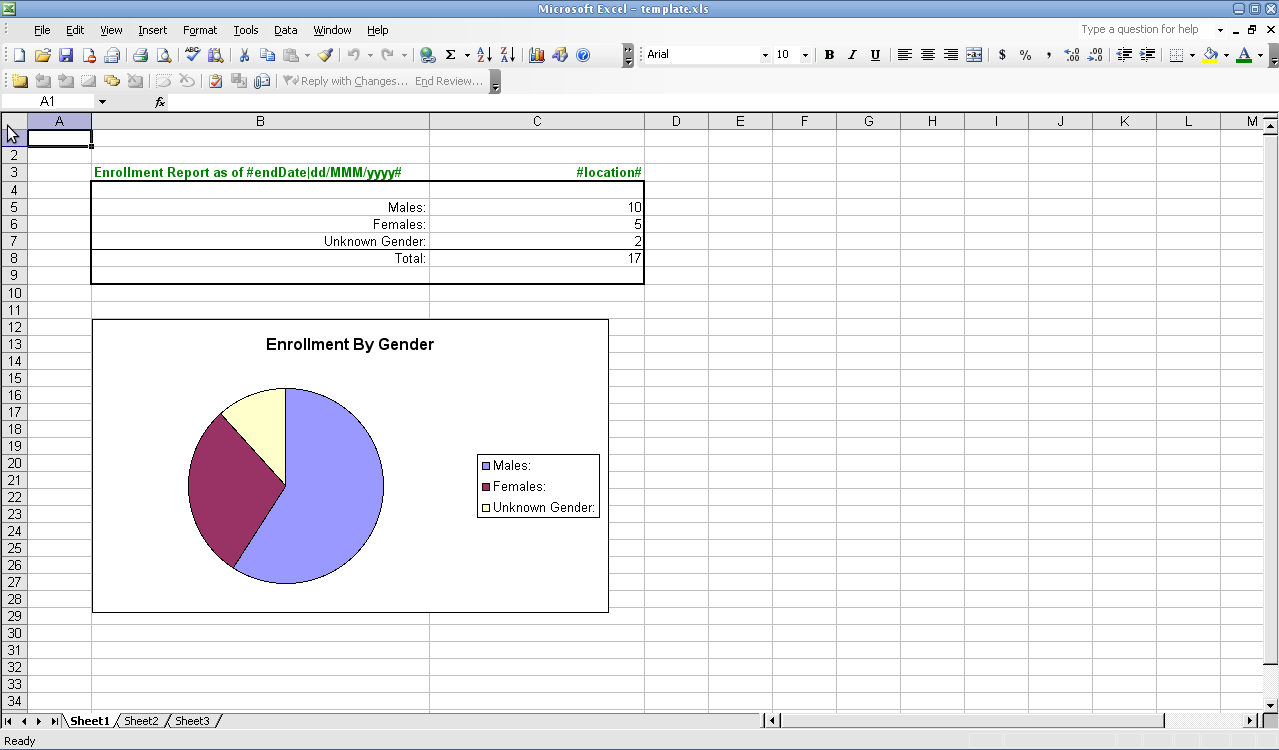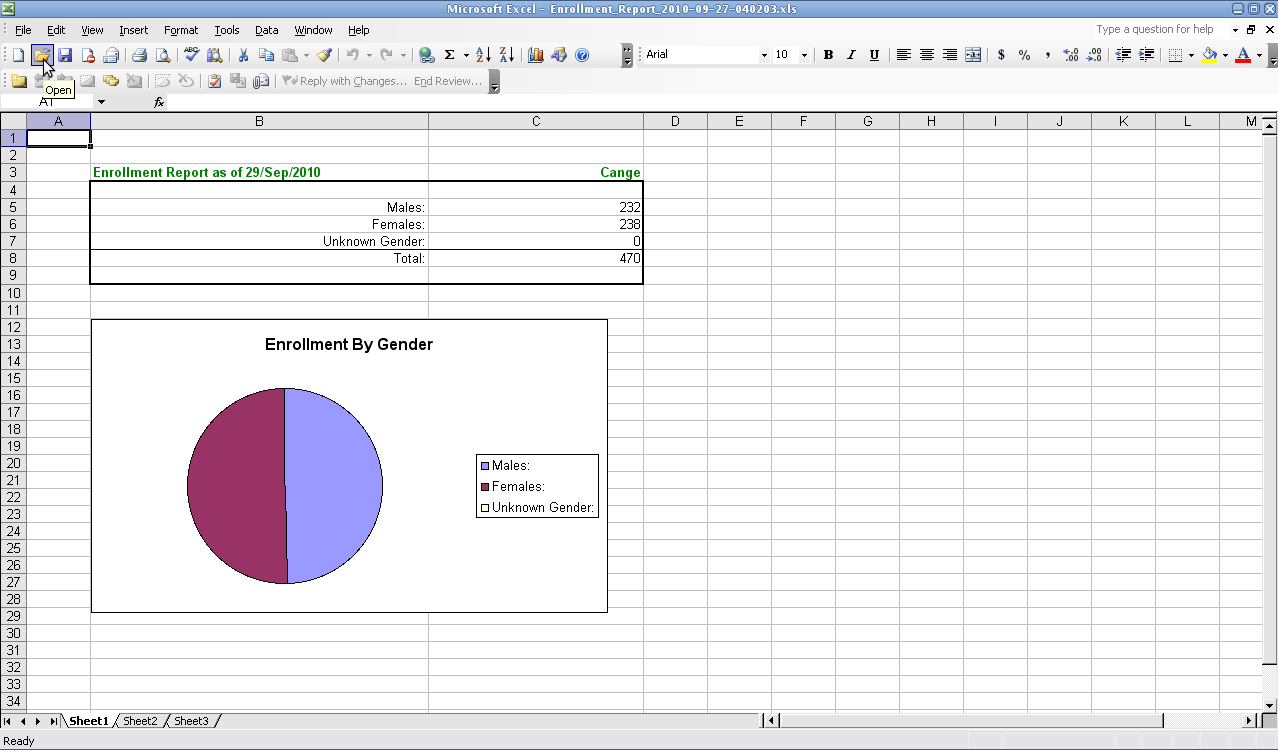...
1. Define Period Indicator Report. Make note of the numbers that you give to each indicator in the report. To the right, you will see that we have created a sample report with indicators numbered 1, 1.A, 1.B, and 1.C. Running this report with the default "Indicator Web Report" view, confirms that this report runs and produces correct numbers for each of our our numbered indicators. |
|
|
2. Once you have configured your report, and know After the report is configured and the names of each of your parameters and numbers of each of your indicators are defined, you can build the Excel-based template. This involves a couple of steps. In the first image to the right, we have used sample numbers to create the report in Excel in exactly the format in which we want it to appear. We incorporate fonts, colors, borders, calculations, and even graphs which are calculated off our or indicator numbers when generated. |
|
...
5. Return to Run a Report. Choose the newly created report. The Excel template that was uploaded is available in the list of "Output Formats". Running the report and choosing this format should produce an Excel Report output like the one shown to the right. |
| |
Special hints for row-per-domain
If you want to show multiple rows on the final excel spreadsheet, define the location on the template along with dataSetName in the Design Properties text area. In the attached example, the following format is used:
| |
|
|
Available replacement values
...




